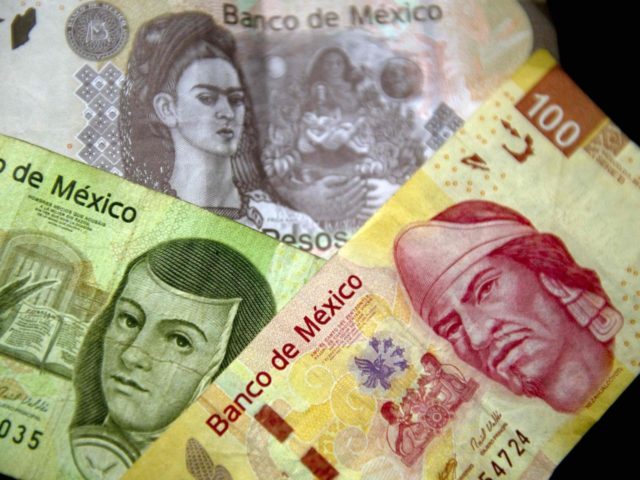Mexico’s central bank was forced to pledge up to 12 percent of the nation’s total foreign exchange reserves to prevent a disastrous run on the peso currency, which has already fallen by 20 percent since the U.S. elections on November 8.
Mexico suffered a 25 percent devaluation of its currency against the U.S. dollar during the last three months, and fell over 38 percent since 2014. Although the currency strengthened by about 5 percent to an exchange rate of 21 pesos to the dollar, Banco de Mexico announced that the government would pledge $20 billion of Mexico’s $179 billion in foreign exchange reserves to back currency swaps.
The U.S. Federal Reserve announced January 30 that it had decided to “taper” another $10 billion from its $4 trillion monetary debt expansion, which began in 2008. To put that liquidity shrink in perspective, $10 billion of Fed debt purchases is more than the money flows of both Mexico and Canada. The $20 billion that the Fed has already removed from the international markets is roughly equivalent to the combined monthly money flows of Mexico, Canada, India, Brazil, Turkey, Indonesia, Thailand, Chile and Ukraine.
By injecting foreign currency from its reserves into circulation, the decision is a “clear and significant reaction to the pressure from changing U.S. economic and social policies,” according to the latest report on the growing crisis from Stratfor Global Intelligence.
Mexico’s socialist government has been blamed for squandering the nation’s oil wealth, and is now attempting to limit currency fluctuations in the value of the peso to ensure social stability. Depreciation of the peso immediately pushes up food prices — including staples such as corn — which hurts Mexico’s poorer citizens and increases the probability of protest.
Banco de Mexico’s benchmark interest rate has more than doubled in the last 15 months from 3 percent to 6.25 percent in an effort to constrain inflation. Although $20 billion sounds like a large number, it is only a temporary band-aid to prevent a collapse in business borrowing that could set off an economic depression.
The Mexican government fears the return of the 1994 Tequila currency crisis, when the U.S. Federal Reserve raising interest rates, combined with ruling party corruption, caused Mexico to suffer a 52 percent hyper-inflation. Mexico’s foreign exchange fell by 85 percent and the peso lost 62 percent of its value versus the dollar. The crisis did not end until the United States made a $50 billion bailout.
Breitbart News recently reported that Mexico’s economy is reliant on the North American Free Trade Agreement (NAFTA), which has resulted in 90 percent of U.S. multi-national corporations having Mexican operations. Mexico is now the 12th largest export economy in the world, but only because 80 percent of Mexico’s $400 billion in exports go to the United States. The U.S. had a small trade surplus with Mexico prior to NAFTA, but the U.S. trade deficit with Mexico last year was $63 billion.

COMMENTS
Please let us know if you're having issues with commenting.